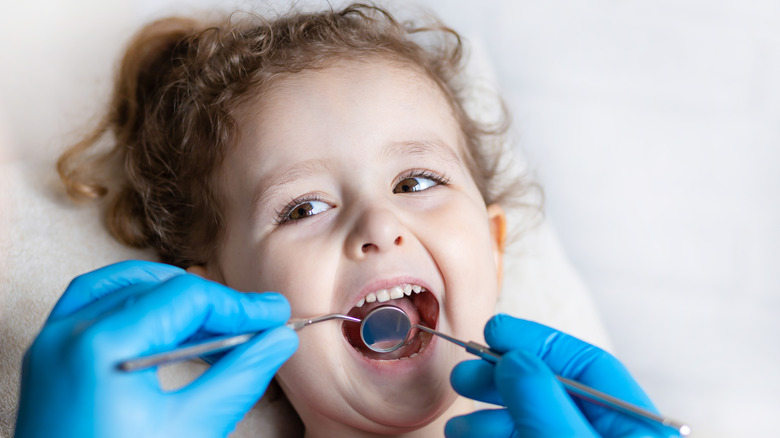People generally have 20 baby teeth, and after those teeth fall out and new ones emerge, most people end up with 32 teeth to last them through adulthood. This isn’t the case for everyone, however — some people have extra teeth. The most common scenario, affecting up to 1.9% of the general population, is that the person has one extra tooth called a mesiodens (per European Journal of Medical Genetics).
According to Colgate, a mesiodens most commonly appears between a person’s two front teeth. Its name means a combination of “mesio,” which means “middle,” and “dens,” meaning “tooth” (via The Free Dictionary). Healthline notes that a mesiodens can also appear behind the two front teeth, and it is possible to have more than one mesiodens, which would be called mesiodentes. While the European Journal of Medical Genetics observes that mesiodens is more common in boys than girls, the real question is why some people have it all.
A number of conditions can cause a person to grow extra teeth

Nobody is sure of the exact reason why some people grow extra teeth. There could be multiple factors at play, including genetics and environment. Mesiodens is more common in people who have a cleft palate and lip, or rare genetic conditions, such as Gardner’s syndrome, cleidocranial dysplasia, and orofaciodigital syndrome (per Healthline).
Colgate notes that some people may grow a mesiodens due to mouth or facial trauma, a rise in the levels of dental laminate material, or a growing tooth that splits into two. Other risk factors may include Fabry syndrome, cherubism, Apert syndrome, and Crouzon syndrome.
According to a 2024 study published in the European Journal of Dentistry, extra teeth can be “an important component of a distinctive disorder and an important clue for early diagnosis.” Detecting and diagnosing any abnormalities early can help doctors offer proper care and treatment to their patients.




